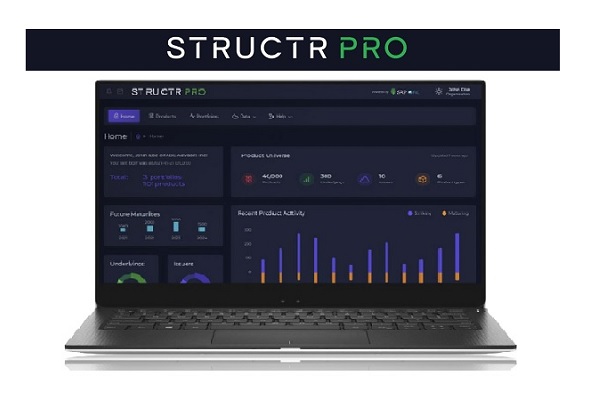The European PRIIPs regulation is one of the most ambitious and wide-ranging initiatives in investor protection ever seen. It was originally borne out of the global financial crisis (GFC) in 2008 where stockmarket falls and credit events resulted in many investor’s portfolios being severely impacted. The response of the European Union (through its regulatory bodies the “three ESAs”) was two-fold and took many years to design, consult and implement.
Protecting investors post GFC
The EU’s approach consisted of a significant expansion of MiFID (becoming MiFID II) and the introduction of the Packaged retail and insurance-based investment products (PRIIPs) regime. MiFID II is responsible for the regulation of financial markets and determining high-level investor protection. PRIIPs specifically covers the sale of all retail investments. These are divided into four categories: high risk investments (Category 1), funds and other unleveraged investments (Category 2), structured products (Category 3) and insurance products (Category 4).
It was not just the losses to investor portfolios that caused this reaction but the fact that products were often too complex, too risky, not sufficiently or consistently explained and sold to the wrong set of investors (or “target market” as MiFID II has come to define this key concept).
MiFID II and PRIIPs are parallel and overlapping regulations which both came into force five years ago in January 2018, having both been delayed along the way by twelve months due to the practical difficulties of completing all the necessary consultations and implementations. The PRIIPs regulation in particular attracted controversy from the beginning, principally around the content and definitions of the Key Investor Document (KID) that is now legally required at the point of sale of any retail investment offered in the European Union.
There were several reasons for the critical reception that the PRIIPs KID received. The two central objections were around the definition of performance scenarios and the way that the transition of UCITS investments into the PRIIPs regime was managed.
Criticisms and changes
In my view the three main changes to PRIIPs that are coming in for 2023 are quite subtle but have far-reaching consequences. Two of them relate to incorporating the UCITS regime and the third addresses recent ESG initiatives. UCITS accounts for a significant proportion of fund sales in the EU and has been operational since 1985. UCITS created its own standardised document (styled KIID rather than KID) long before PRIIPs was conceived. Because UCITS was only intended for regular funds the KIID used a simple volatility-based risk rating and relied quite heavily on showing past performance. Focussing on volatility and historic returns is standard in the fund world.
The PRIIPs regulation is more ambitious and places all types of investments in the same framework to extend beyond simple funds. This has some logic but trying to force a common methodology onto fundamentally different types as represented by the four categories has proven very difficult.
The format of the KID has informative and narrative sections followed by product data consisting of a risk rating, performance scenarios and cost calculations. The performance scenarios are designed to show favourable, moderate, unfavourable and stress scenarios.
The PRIIPs risk rating (on a 1 to 7 scale) has been reasonably well accepted and has not been changed in this revision. It is based on a variation of a volatility measure for funds and a simulation-based method for structured products. The main criticism has been on the way the risk bands which both run from 1 to 7 are calculated. For example, a fund of 11% volatility would be risk level 5 under UCITS but only 3 under PRIIPs. This has nothing to do with the calculation methods which are very similar. Instead there has been a simple failure to calibrate consistently. Fund providers and distributors will now have a difficult job for some time in explaining this sudden jump to investors.
The infamous performance scenarios
The biggest problems with the PRIIPs KID has been caused by the performance scenarios. So much so that the UK FCA version of PRIIPs has dropped them altogether. Sitting outside the EU now, post-Brexit UK is also about to make changes to its own slightly different flavour of PRIIPs under FCA regulations. The UK government also announced in early December that it intended to drop PRIIPs altogether at the earliest opportunity, expected to be around the end of 2023. Its own regulatory direction will centre around the new “Consumer Duty” directive, which is an update of some of the themes first defined in Treating Customers Fairly (TCF) and the Retail distribution Review (RDR).
The original version of PRIIPs tried to move away from simple past performance as UCITS does in order to cater for other investment types and show a fair picture in different market cycles. Unfortunately the method devised was overly complicated and insufficiently tested with the result that numerous problems were immediately spotted. PRIIPs made the mistake of creating a methodology which depends on past performance (in particular overall market direction) but is not direct past performance. In times of strong market growth it therefore paints a very rosy picture but in a way that confuses a product’s true prospects.
This delayed the original implementation of PRIIPs by a year and caused an unprecedented rejection by the European parliament. It has also created huge resistance from the fund and UCITS sectors who saw their KIID as fit for purpose and the PRIIPs KID as definitely not.
The biggest calculation change has been to replace the “Cornish Fisher” method with a single pass backtest for category 2 investments. Structured products have not been affected. This is an improvement and walks PRIIPs performance scenarios back towards the original UCITS method. However, this does mean that there are now three methods that have seen the light of day. Category 2 original, Category 2 revised and Category 3. All these methods are fundamentally different and therefore cannot be guaranteed to give similar results. This will cause problems in transition and comparing different product types.
If the experience of PRIIPs has taught anything it is that methodologies need to be thoroughly tested and consulted before implementation. To make any changes later is extremely difficult. Despite all the time and consultation that the original PRIIPs went through it did not wholly succeed in this.
Incorporating ESG
PRIIPs can be traced back to 2008 with a desire to inform investors better. Of even greater political importance is the focus on ESG and sustainability. The main regulation in this area is on sustainability‐related disclosures for financial services which has now come into force.
The latest revision of the KID now includes a requirement to provide information about the status of the investment. ESG was once viewed as a separate track by many but has now forced its way into the mainstream. “Portfolio sustainability” is now as important as “Portfolio risk”. Since the KID is already required for all investments, it makes a perfect vehicle to get the message out to investors. We can expect further harmonisation of these concepts as investors become increasingly aware and regulators push their agenda along.
Tags: RegulationImage courtesy of: Ralph Katieb / unsplash.com















